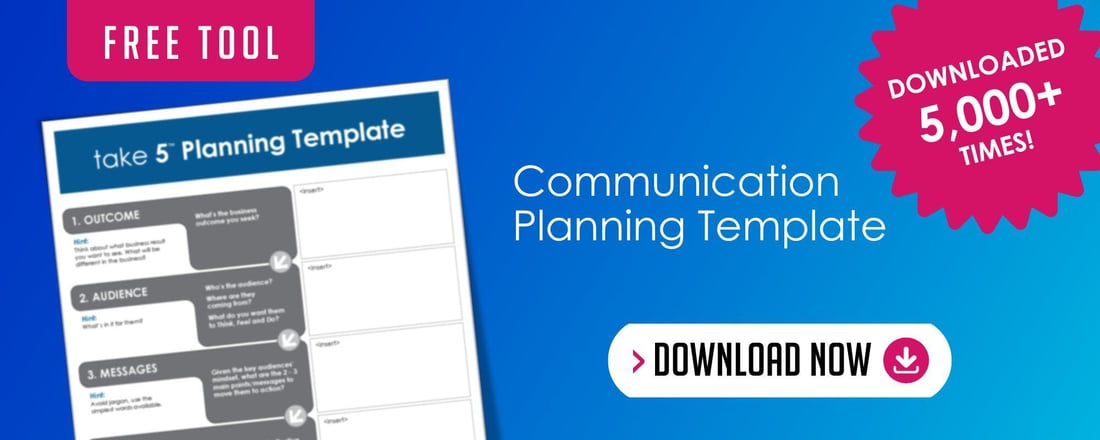6 Steps to Make Delivering Difficult Messages to Employees a Bit Less Painful

It’s never easy to communicate difficult information to a group of employees. With today’s distributed workforce, those challenging moments can feel even harder. Though difficult, it’s these messages that sometimes stand out the most in employees minds and can impact morale moving forward. That’s why it’s important to prepare for tough conversations rather than shooting from the hip.
6 Steps to Deliver Tough Messages to Employees
You can start by knowing and applying these six essential steps:
1. Identify the problem
- Are business results not where they should be?
- Do staffing changes need to be made?
- Are there undesired behaviors that need to change?
- Is there a change in policy that could be viewed as infringing upon personal freedoms?
2. Identify your desired outcome
- Are you trying to put business news in context for your employees?
- Do you need your team to understand changes that are underway?
- Do you need desired behaviors to become the norm among your staff?
- Do you need employees to act to be in compliance with a new company mandate?
3. Identify your audience
- Do you need to inform your entire staff or just a small group of employees who are directly impacted?
- Is it one employee?
- Are there others who should be made aware even if they aren’t directly impacted right now?
- Should they all hear the message at the same time, or should some people hear it first?
Think about the news like a pebble creating a ripple in a pond, where the first ring is made up of those directly involved in or impacted by the news, then the next ring includes those indirectly impacted, followed by those who should hear the information first from you but aren’t necessarily involved or impacted by the news.
4. Structure your key messages/conversation
- What do you want your audience(s) to think, feel and/or do?
- What will you say (in a calm, constructive way) to employee(s) so that they understand the situation and your concerns?
- Consider how to start the conversation?
- Share your motivation and intent since context is a key factor in the recipient understanding and accepting a decision even if they don’t like it.
- Identify the questions you will ask (to see input/check for understanding). For example, “Tell me how you feel about what I just said.”
- Have stories or examples to share to illustrate your main point.
- Outline specific actions being taken and/or that your employees need to take along with associated timing if you can provide that level of detail at this time.
- Think about your employees’ mindset once the message is delivered and list out potential questions you anticipate they’ll have so that you can be prepared to address them.
5. Consider how you will say your message
- Select the right time and place to have a conversation with privacy and without distraction.
- Encourage dialogue so you can get real-time insight on how employees are receiving the information and whether they understand what you are saying.
- Consider other meetings, projects, or deadlines your employees may be facing at the time the news is delivered.
- Adjust to the extent possible so that they have time to appropriately process the difficult message before diving back into their other work.
6. Follow up
- This can be done individually and through subsequent group meetings depending on the type of news, number impacted, and extent of the impact. Do your employees have questions? What’s on their minds?
- Consider offering set times in the days that follow when you will be available for those who would like to talk with you in more detail and/or have questions once they’ve thought more about the information you have shared.
What do you most dread about delivering tough messages to your employees? What technique do you use to help overcome that hesitation?
—David Grossman
Plan your communication—whether it's to a colleague, your team or company-wide—in as little as 5 minutes. Click the image below to download your copy of this free tool—Take 5™ Planning Template.


Comments on this post